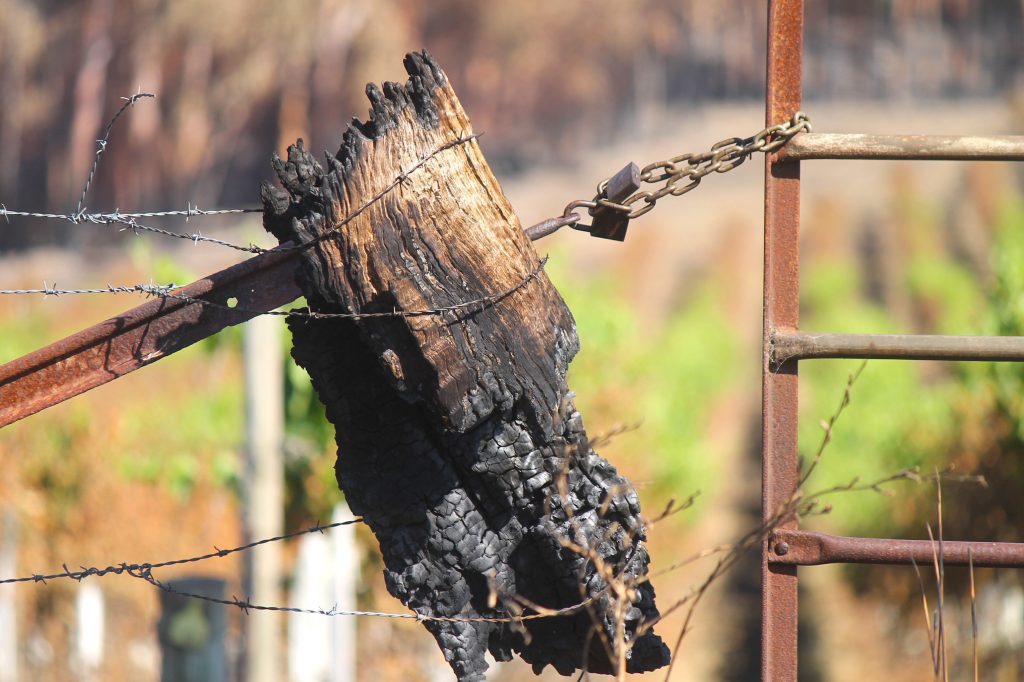Adelaide Hills and Kangaroo Island winegrape growers will have access to subsidised smoke taint test samples to assist them in better understanding the impact on their crop from the bushfires.
As part of a $330,000 recovery package through the South Australian Government’s Wine Industry Development Scheme, the Government is offering smoke taint samples to individual growers, funding a longer-term smoke taint research project and undertaking a project to survey and assess damaged vines are all initiatives.
Minister for Primary Industries and Regional Development Tim Whetstone said the Government was assisting winegrape growers so they can better understand the impact of smoke taint on their vineyard.
“The Marshall Liberal Government will work with the Australian Wine Research Institute (AWRI) to offer free smoke taint samples to winegrape growers prior to vintage providing them with data so they can make informed workforce decisions,” said Minister Whetstone.
“This will help growers get the information they need to be able to make decisions as they rebuild their businesses and get back on their feet.
“Along with tourism, the primary industries sector will be pivotal to the economic recovery of the Adelaide Hills and Kangaroo Island and that’s why we are offering this assistance.
“Smoke taint laboratory tests are normally $300 per test, so being able to support winegrape growers to access this service at a time when cash flow has been severely impacted is important.
“There is no certainty local grapes will be impacted by smoke taint from fires which occurred while berries were still green. The Government wants to be able to give growers the evidence and data they need to give their markets confidence when selling their grapes.
“This is a collaborative project working with the AWRI to fund smoke taint tests and allocate laboratory spots to Adelaide Hills and Kangaroo Island growers.”
Minister Whetstone said a program will also be offered to bushfire affected winegrape growers from mid-February for farm mapping experts and viticulturists to survey damage to vines, equipment and infrastructure providing topographic maps of vineyard impacts to growers.
“After the surveying is complete, viticulturists from the AWRI will then work with growers to assess the data to provide technical advice on vineyard recovery and regeneration to individual growers,” said Minister Whetstone.
The Government is also committing $100,000 to a new research trial in the Adelaide Hills to help winegrape growers better predict smoke taint impacts that occur earlier in the harvest process and support preparedness for future fire events.
AWRI General Manager Business Development Mark Krstic said the current best practice for smoke taint testing in winegrapes can only be conducted two to three weeks before harvest with no reliable testing methods available for the earlier stages of the growing season.
“Despite its terrible impacts on the Adelaide Hills wine region, the Cudlee Creek fire occurring eight to 10 weeks prior to harvest provides a unique opportunity for the industry to analyse grapes at different stages of ripeness and see if the early analytical results can accurately predict smoke taint,” said Mr Krstic.
“If the results can lead to a reliable early testing process, it will transform the way industry bodies, grapegrowers and government respond to fire and smoke damage into the future.”
For further information and to register interest for the smoke taint testing and vineyard surveying and assessment initiatives, visit www.pir.sa.gov.au/bushfire-vineyard-recovery
